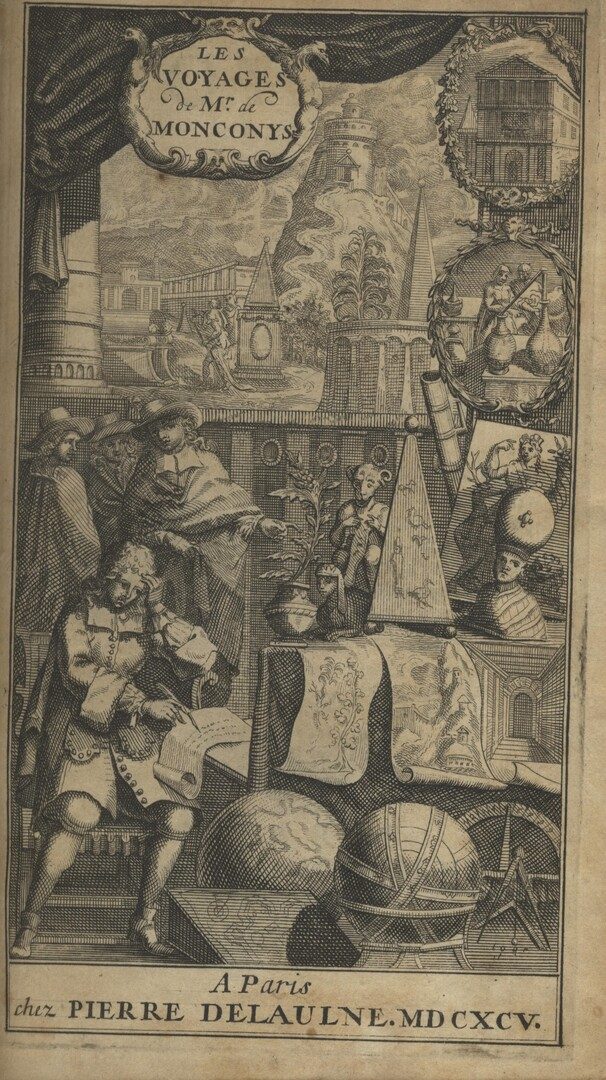Voyages de M. de Monconys, Conseiller du Roi, & Lieutenant Criminel au Siege Presidial de Lyon. Où les Sçavans Trouveront un Nombre Infini de Nouveautez, en Machines de Mathématique,Expériences Physiques, Raisonnemens de la Belle Philosophie, Curiositez de Chymie, et Conversations des Illustres de ce Siècle… FOUR VOLUMES IN FIVE.
Monconys, Balthasar de 1611–1665.
Synopsis
Monoconys was a French traveller, diplomat, physicist and magistrate, who left this diary, which was published for the first time by his son in Lyon in two volumes, 1665-1666. Monconys’s voyages extended from 1628 to 1664. Volume I contains his account of Portugal, Provence, Italy and Egypt which he traversed from 1645-47. He visited Syria, Constantinople and Asia Minor from October 1647 to January 1649 (Volume II Part I). Volume II Part II describes England and the Low Countries which he visited in 1663. From September of 1663 to June 1664 he visited Germany and Italy (Volume III). Volume IV contains Monconys’s earliest voyage – to Spain in 1628 – and a long letter written by him from Constantinople in 1648 on the death of Sultan Ibrahim in that year, and other letters between Monconys and his friends as well as treatises, poetry, chemical receipts, etc. Monconys worked as a Mathematician and physicist in addition to his duties as privy councillor; his work of interest for the history of science because he visited many scientists and alchemists on his travels. He assisted in the founding of the Royal Academy and gives an account of its early meetings.
Monconys twice paid a visit to Delft to satisfy his curiosity about another hidden church and to meet an artist with a growing reputation. He was the only person, besides Pieter Teding van Berckhout, who met Vermeer, on 11 August 1663, and wrote down an eyewitness account of Vermeer’s paintings, during the artist’s lifetime. Vermeer had no paintings to show him and Monconys and his companion, a clergyman from The Hague, were directed to the local baker Hendrick van Buyten, who possessed one of the artist’s paintings. Monconys also visited Johannes Sibertus Kuffler in the same year.
Bibliographic references: Weber II 258; Blackmer 1146; Tobler 103; Atabey 825 for first edition.








